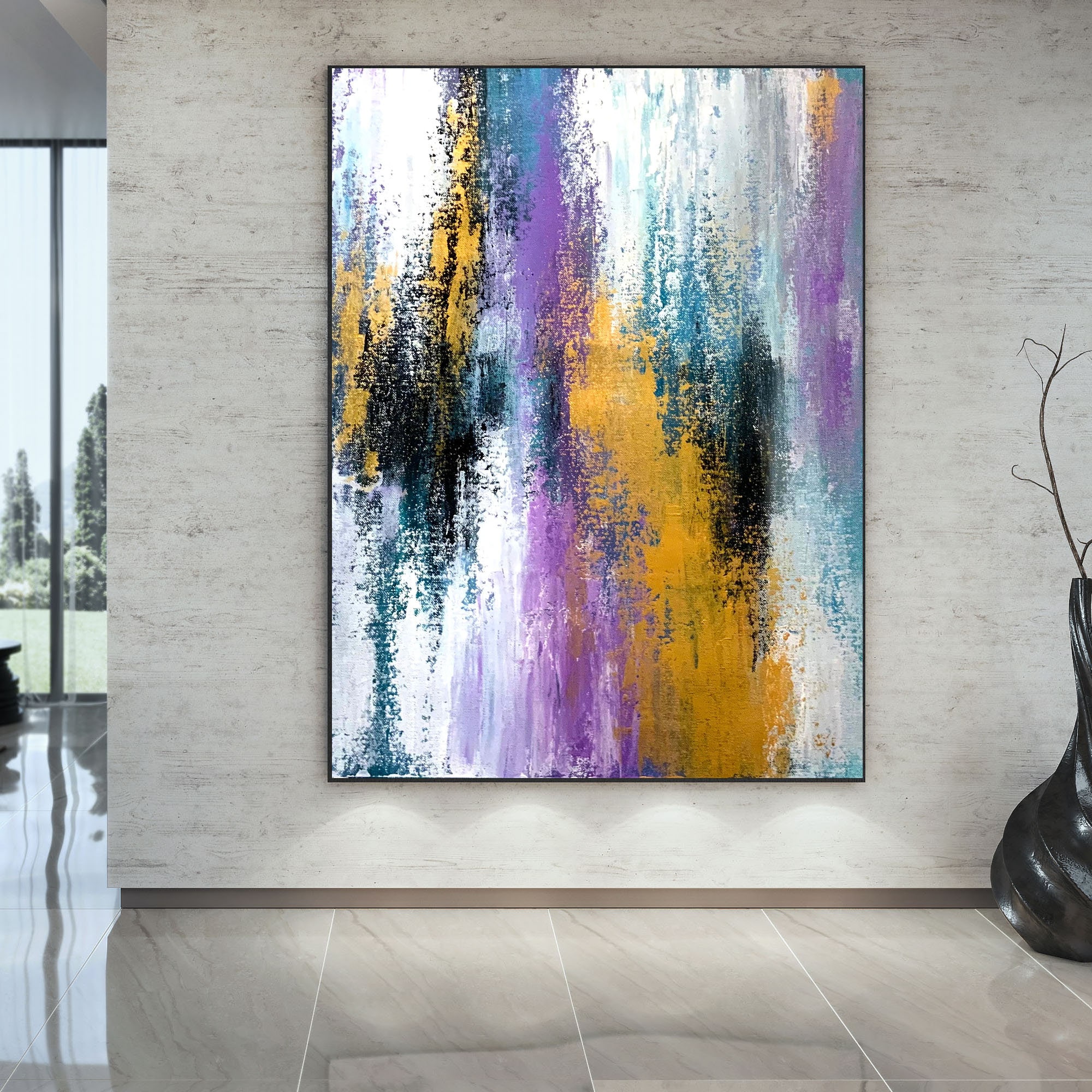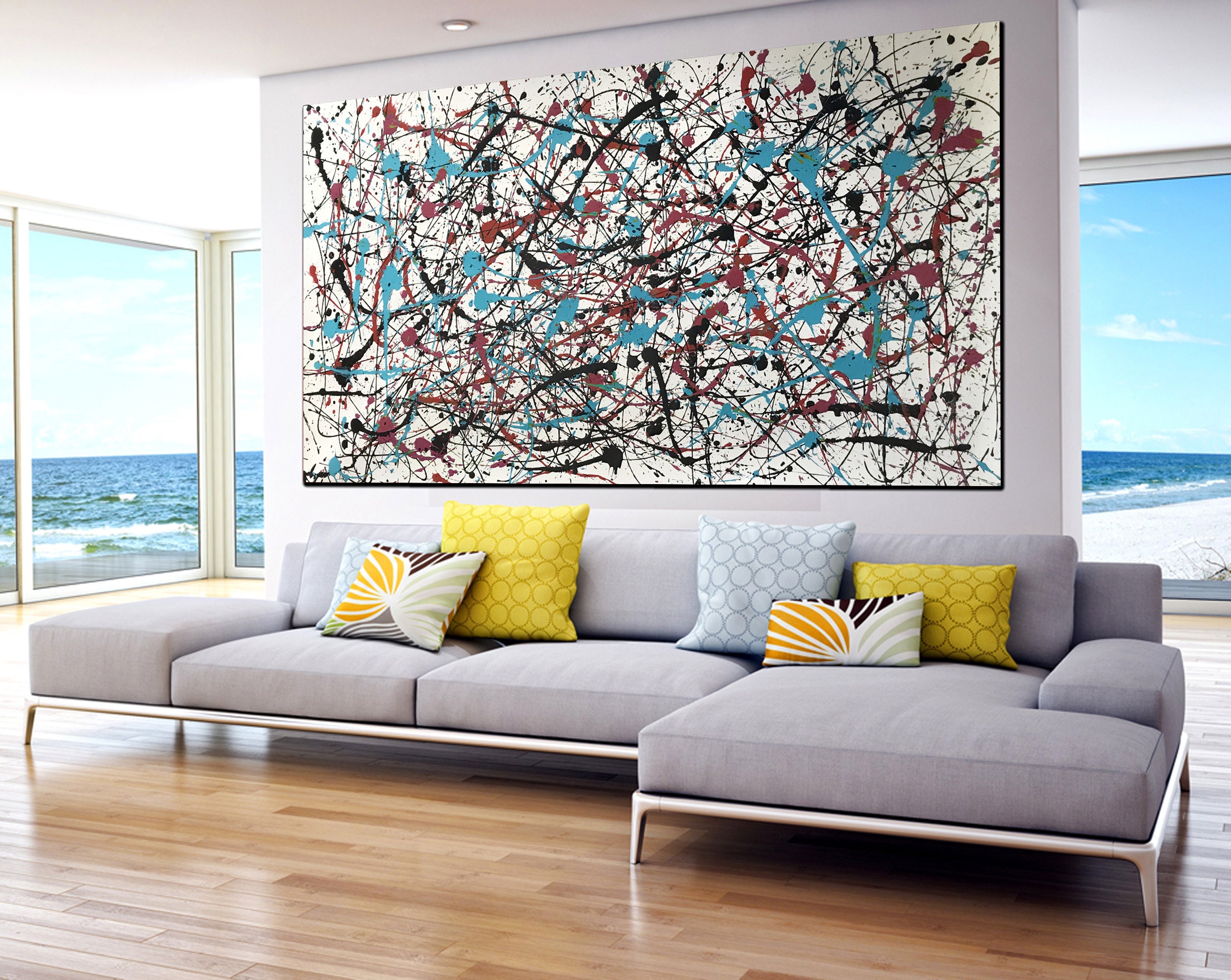Design Elements and Composition

Abstract canvas wall art transcends the boundaries of representational art, offering a realm of boundless creativity. Through the skillful manipulation of design elements and composition, artists can evoke emotions, provoke thought, and create visually stunning masterpieces.
Elevate your japandi interior design with abstract canvas wall art. These striking pieces capture the essence of Japanese minimalism and Scandinavian functionality, creating a harmonious blend of aesthetics. From geometric patterns to vibrant hues, abstract canvas wall art adds a touch of sophistication and visual interest to your space, enhancing its overall ambiance.
Bold shapes, vibrant colors, and unique textures dance across the canvas, creating a symphony of visual intrigue. Negative space, the area surrounding and between the elements, plays a crucial role in defining the composition and enhancing the impact of each form.
Balance between Organic and Geometric Forms
The interplay between organic and geometric forms adds depth and dimension to abstract canvas wall art. Organic shapes, with their flowing curves and irregular edges, evoke a sense of naturalism and fluidity. Geometric shapes, on the other hand, bring structure and order to the composition, creating a contrast that can be both harmonious and dynamic.
Compositional Techniques
The arrangement of elements within the composition is essential for creating visual interest and evoking emotions. Asymmetry can create a sense of tension and dynamism, while symmetry can bring balance and tranquility. The placement of elements, their scale, and the use of repetition can guide the viewer’s eye through the artwork, creating a narrative or a focal point.
Elevate your abstract canvas wall art with the opulent touch of rose gold wallpaper. Its shimmering hues create a luxurious backdrop, enhancing the bold strokes and vibrant colors of your artwork. As the abstract canvas becomes the focal point, the wallpaper’s subtle elegance complements it seamlessly, adding a touch of glamour to your space.
Materials and Techniques: Abstract Canvas Wall Art

Abstract canvas wall art offers a vast array of materials and techniques that contribute to its unique aesthetic appeal. Artists employ a wide range of media, including acrylics, oils, and mixed media, each with its own distinct characteristics and expressive potential.
Acrylics, known for their fast drying time and vibrant colors, allow artists to create bold and layered compositions. Oils, on the other hand, provide a rich and buttery texture, enabling artists to achieve subtle gradations and depth. Mixed media pieces combine different materials, such as acrylics, oils, collage elements, and even found objects, to create complex and visually captivating artworks.
Techniques for Creating Texture, Depth, and Movement
Beyond the choice of materials, artists utilize a variety of techniques to create texture, depth, and movement in their abstract canvas wall art. Impasto, a technique involving the application of thick layers of paint, adds a sculptural quality to the artwork, creating a sense of depth and texture. Glazing, where thin layers of transparent paint are applied over one another, allows for subtle color variations and a luminous quality.
Collage and mixed media techniques introduce elements of texture and dimension, adding visual interest and depth to the composition. Artists may incorporate fabric, paper, or other materials to create a tactile and multi-sensory experience. By employing these techniques, artists can transform a flat canvas into a dynamic and engaging work of art.
Inspiration and Interpretation

Abstract canvas wall art draws inspiration from various sources, including nature, music, and personal experiences. These works often explore emotions, ideas, and concepts, allowing viewers to interpret the meaning behind the pieces.
The subjective nature of abstract art allows for multiple interpretations. Viewers may see different shapes, colors, and textures, evoking unique emotions and associations. This ambiguity encourages contemplation and invites viewers to engage with the artwork on a personal level.
Nature, Abstract canvas wall art
- Abstract artists often find inspiration in the organic forms and patterns found in nature. Natural elements, such as landscapes, flowers, and animals, can be translated into abstract compositions, capturing their essence and evoking a sense of tranquility or wonder.
Music
- Music can inspire abstract art, with artists translating the rhythms, melodies, and harmonies into visual forms. The interplay of colors, shapes, and textures can create a visual representation of the emotions and ideas conveyed through music.
Personal Experiences
- Abstract art can serve as a means of expressing personal experiences, emotions, and memories. Artists may use colors, shapes, and textures to convey their inner thoughts and feelings, creating a visual representation of their subjective experiences.